If you want your tomato plants to grow well and produce a steady supply of tomatoes, one of the most helpful things you can do is prune them early. Taking care of this job from the start can make a big difference in how your plants grow and how much fruit they produce throughout the season.
Tomato plants that are never pruned often turn into a big, tangled mess. When the branches grow in all directions and the leaves pile on top of each other, it creates more than just an untidy plant.
It also makes it harder for light, air, and nutrients to reach the parts of the plant that need them most – like the flowers and developing fruit. Not to mention that it also becomes a breeding ground for pests and disease.
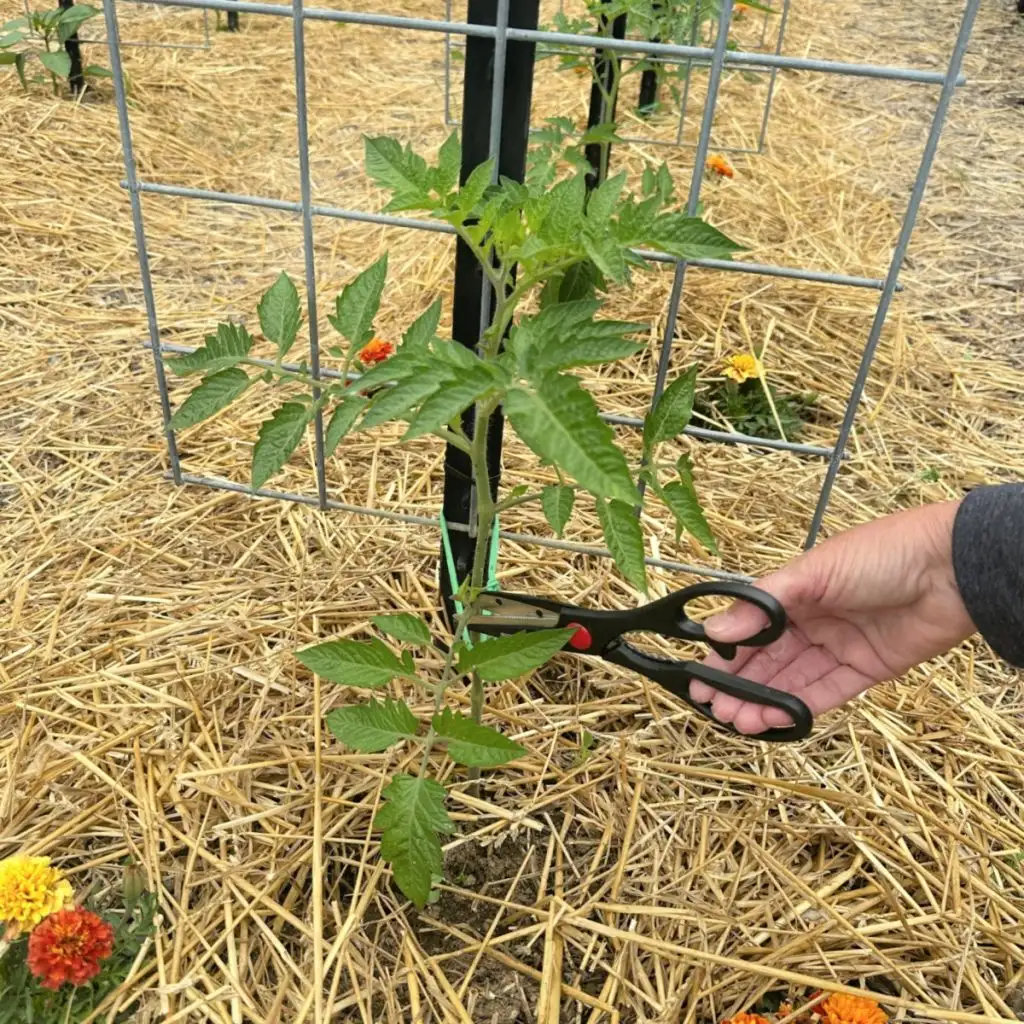
Why Tomato Plants Benefit from Pruning
There are many benefits of pruning and one of the main reasons that it is beneficial is that it helps redirect the plant’s energy into producing tomatoes instead of wasting it on extra stems and leaves. When too much foliage is left on a plant, it takes away water and nutrients that could otherwise go toward producing more flowers and ripening the tomatoes that are already growing.
In addition to conserving energy, pruning makes it easier for air to flow through the plant. Good air flow helps prevent disease, especially when the weather is warm and humid.
Mold and mildew love thick, damp areas where air doesn’t circulate, and that’s exactly what happens when tomato plants become overgrown.
Another thing to keep in mind is that overgrown tomato plants are more likely to attract bugs. Dense leaves and stems give insects places to hide, and once they’re inside the plant, it’s hard to spot them until damage has already been done. Pruning keeps the plant open and easier to check for pests and other potential problems.
There are three main areas on a tomato plant where pruning helps the most – underneath the plant, in the center, and where suckers grow. Taking time to prune these areas will give you healthier plants that are easier to care for and more likely to give you a better harvest.
1. Start by Pruning the Bottom of the Young Tomato Plant
One of the first things to do is remove the lower branches and leaves of your tomato plant. These are the ones closest to the soil. As tomato plants grow, those bottom branches can easily come into contact with the ground. When that happens, there’s a much greater chance of disease.
Diseases like blight can spread when water from rain or watering splashes up from the soil and lands on leaves that are touching or near the ground. Getting rid of those low-hanging leaves helps prevent this. It also opens up the plant so air can move through more freely.
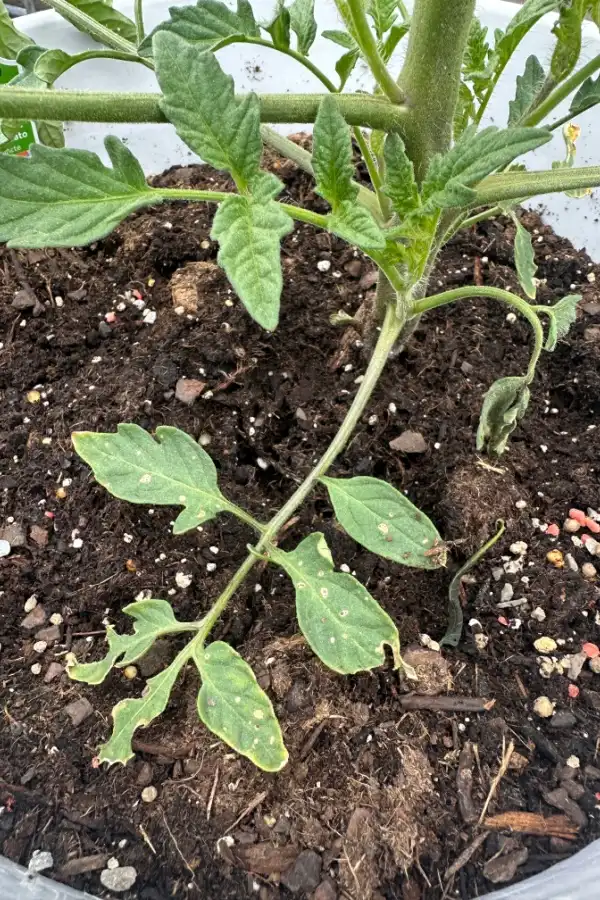
Removing lower branches has a few other benefits too. It gives you more space around the base of the plant to water, check soil moisture, and even weed if needed. It also keeps bugs like slugs and beetles from crawling straight up from the ground onto the plant.
As a general guide, for tomato varieties that grow in a shorter, bushier form (these are often called determinate tomatoes), try to clear out the bottom 10 to 12 inches by the time they are fully grown.
For larger tomato plants (often known as indeterminate types), you can remove even more foliage. Prune up to 12 to 18 inches from the bottom – since they continue growing throughout the season.
2. Watch for and Remove Suckers
Suckers are small shoots that grow right at the spot where a branch meets the main stem. They pop out at an angle in that little “V” space and grow quickly.
It might not seem like a big deal at first, but these suckers can turn into full branches over time, using up valuable energy from the plant.
Most of the time, suckers don’t produce many flowers or fruit. Even when they do, the tomatoes are usually smaller or ripen more slowly.
But the real problem is that they pull energy away from the rest of the plant. That energy could be used to grow stronger stems, bigger tomatoes, or more flowers instead.
That’s why it’s a good idea to prune the suckers off your young tomato plants early. Once you spot them, pinch them off with your fingers or use a small pair of pruners or scissors.
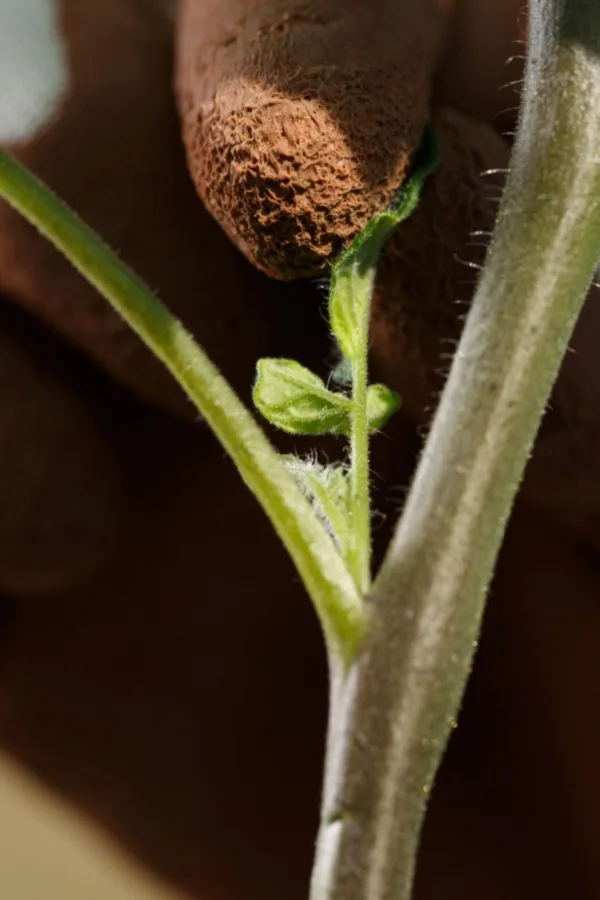
When they’re small, they come off easily with just a little pressure. The sooner you remove them, the better, since that stops the plant from putting energy into something that doesn’t really help it.
Check your plants often in the early stages of growth. New suckers can appear quickly, especially when the plant is in its fast-growing phase. Removing them regularly helps keep the plant focused on growing and ripening its main set of fruit.
3. Prune the Middle of the Young Tomato Plant
The last pruning step is to thin out the center of the plant just a little. As your tomato plant grows taller and wider, the inside can start to get crowded with overlapping leaves and branches. This can cause a few problems, like blocking sunlight from reaching the inner parts of the plant and holding in moisture.
You don’t need to cut a lot from the center, just enough to open things up a bit. Look for leaves that are crowded or growing across each other. Pick one or two to remove so air and light can move through more freely. You’re not trying to take out a large section, just enough to keep things open.
It also helps to trim back branches that shoot far off to the sides or into neighboring plants. These long branches often break in windy weather and can damage the plant. They also take up extra energy that the plant could be using to make more fruit.
If you notice any broken or damaged branches, take them off right away. A plant will spend a lot of its energy trying to fix broken areas. Removing them helps your plant stay focused on growing instead of repairing.
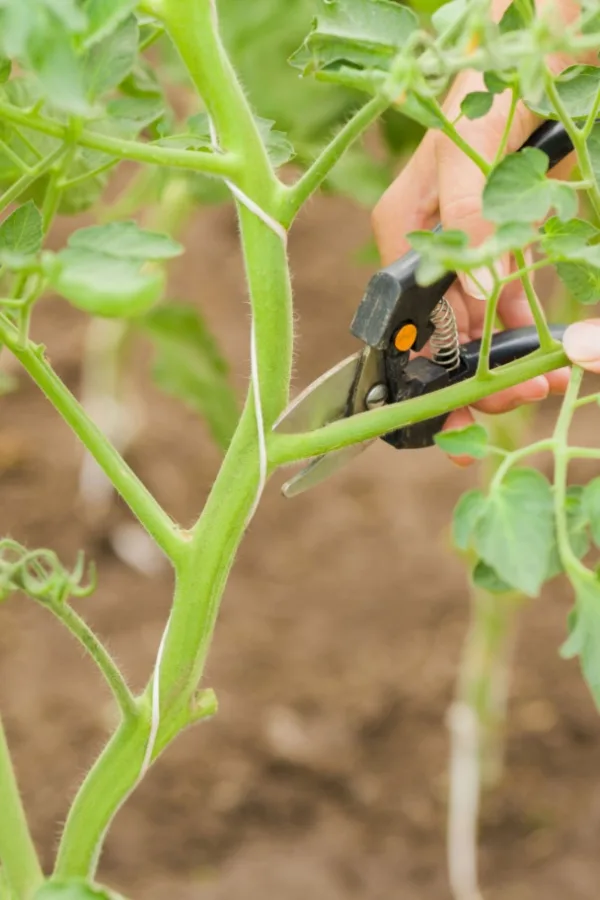
Best Time to Prune
Timing also matters when it comes to pruning. It’s best to prune tomato plants either in the morning or later in the evening when the sun isn’t too strong. Midday heat can put stress on a plant, and pruning during that time makes it even harder on the plant to recover.
Early morning pruning gives the plant all day to adjust before the cooler night sets in. Evening pruning works too, especially if you water the plants afterward to help them bounce back.
Make sure your pruning tools are clean and sharp. If you’re using scissors or pruners, wipe the blades clean between plants. This helps prevent the spread of any disease from one plant to the next.
Additional Benefits of Pruning
There are a few more reasons to stay on top of pruning throughout the growing season. For one, it makes tying up your plants easier. Tomato plants grow fast, and keeping them trimmed means fewer wild branches to tie up or try to support with stakes or cages. (See related article: Why You Need To Stake Tomato Plants Early)
It also makes it easier to mulch around your plants. When the lower branches are out of the way, you can lay down mulch more evenly, which helps keep moisture in the soil and reduces weeds. And since mulch helps control splashing from the soil, it helps to stop disease.
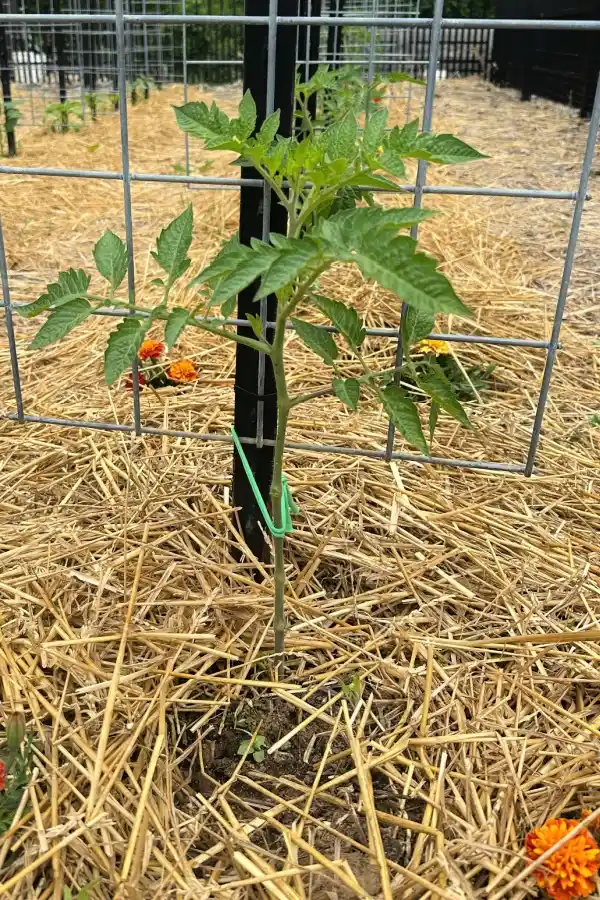
Pruning may seem like extra work, especially if you’re growing a lot of plants, but it’s worth it. Taking a little time each week to check for suckers, trim the bottom, and open the middle can keep your plants in better shape all season long.
By starting early and staying consistent, your tomato plants will have a better chance of staying healthy and giving you a steady supply of tomatoes. And best of all, they’ll be easier to manage, too. For more early growing tomato tips, be sure to see: Why You Need To Remove Early Tomato Blossoms & Tomatoes From Your Plants!
Follow Our Facebook Page For Even More Great Tomato Growing Tips! I Grow Tomatoes Facebook Page
I Grow Tomatoes is a website created for those who love all things about tomatoes – from planting and growing – to cooking and canning! We publish two articles every week, 52 weeks a year. Sign up today to follow via email! This article may contain affiliate links.
